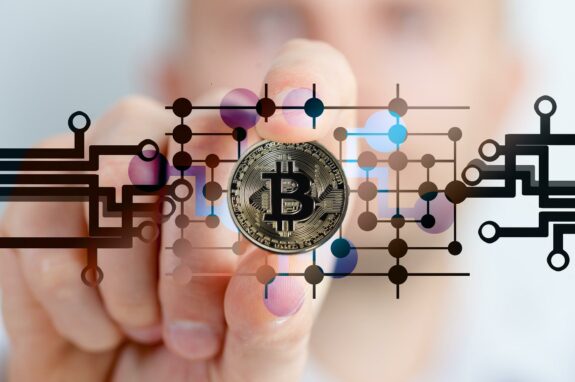
Best Performing Cryptocurrencies
The talk in town is that people reap big from cryptocurrency investing. New millionaires upon…

We have already tried to demystify the distinction between cryptocurrency and fiat currency in our previous articles. One thing that fiat currency has as its DNA which cryptocurrency sought to turn around is the overbearing role of fiat agencies in controlling monies belonging to individuals.
For a long time, account holders at a bank have to constantly seek help from the bank to go around almost everything surrounding their money. Whether it is drawing a cheque, withdrawing money, making an investment, placing a standing order et cetera. Cryptocurrency is dealing with this trust issue.
When making any transactions using fiat currency f.x Indian Rupee (INR), a third party in the name of a commercial bank or central bank records and verifies parts of the transaction. The 3rd force (party) refers to a financial institution. It also refers to varied transaction facilitators comparable to Mastercard, visa, and others.
Blockchain has highly changed the trustless system landscape. It does this by ensuring that everyone is part of that ledger. Blockchain, the backbone of crypto is also called distributed ledger.
The trustless system became a reality in 2010 after the introduction of Bitcoin. Since then, it has always been used in the cryptocurrency market. When sending money in Bitcoin, no financial intermediary is needed to oversee the transaction.
In English, trustless can be defined as not reliable or even unworthy of believing. In the cryptocurrency world, or rather in blockchain, trustless is a system in which there is no need to rely on anybody. Be it a third-social gathering, establishment, or stranger for a community and a fee system to operate.
A trustless system in a blockchain does not depend on any central trusted firm to verify and conduct transactions. Instead, trust as well as power are shared among the network shareholders. An example of the way the system is like the current banking system. In each transaction, it is just the responsibility of the bank to verify and maintain every customer’s records balances.
In crypto, every transaction is verified with so many customers over the globe. There can be as many as 1000 people. Unfortunately, the customers do not know each other. They do not even recognize each other. Their responsibility is to sustain as well as verify every transaction information. This verification works by miners arriving at ‘ a mutual consensus relating to the authenticity of a transaction earlier than passing it alongside to be saved on the blockchain.’
In return for the job that miners do, they get awarded newly minted cash. After the verification of a transaction, it is added to each community consumer’s distributed ledger as well as that of the retailer. The system ensures that after the verification and addition of every transaction, no one may tamper with it.
Even the decentralized systems, including Bitcoin, Ethereum, and Polkadot, do not have a central authority to tamper with it. Instead, it is the customers who have the responsibility of securing and even validating the transactions taking place in the system.
Blockchain, the system used in cryptocurrency, does not eliminate trust. However, it minimizes the trust and evenly distributes it in the network. As an investor, would you invest in a place managed by one person or by a pool of people? Basically, I know most people prefer a system managed by a chain of people.
The centralized systems are usually vulnerable to assaults and hacks. For instance, Bitcoin was once hacked, but the hacker was unsuccessful. It makes the system used unique because the conventional monetary providers just have one authority to confirm knowledge as well as make choices. However, possibilities of the programs getting manipulated and altered still exist. Even so, cryptocurrencies have a unique system. Its decentralized nature, as well as flexibility, is considered the strength of crypto belongings.
Most people believe in a trustless system. However, in cryptocurrency, it does not work that way. Instead, the trustless system just distributes trust in the economy. It does so in an economy incentivizing some of the behaviours. It means that instead of trusting just one person, every person in the chain reserves own trust and trust of the other.
Most of the blockchains use proof-of-work algorithm consensus in adding blocks to blockchains. It plays a role in the verification of the transactions. So, this is a simple explanation of how everything happens. The miners get a job of solving a complicated mathematical problem. In this process, the first person to solve the complex math receives a reward of cryptocurrency.
Trustless technologies suit conducting peer-to-peer transactions. The process gives individuals the chance to put their confidence in abstract notions instead of individuals. The centralized systems, including banks, are the opposite of a trustless system. The reason is that traditional finance services utilize authority in making decisions and validating information.
Decentralized exchange uses liquidity provider, market maker, and order book in facilitating trades. The entities require trust as intermediaries that oversee and transact the trade. Basically, they already control the traders’ funds through a centralized exchange wallet. Unfortunately, most traders do not understand this.
The execution of trustless require smart contracts and atomic swaps. These actions rely only on decentralized code. Moreover, every crypto asset must submit a smart contract in executing a transaction. The structure also enhances trustless trade among strangers. In a system like Bitcoin, there is no necessity to bestow all the trust in anyone specific because everyone is on board.